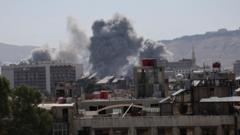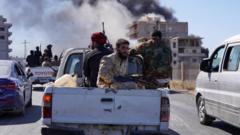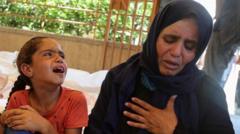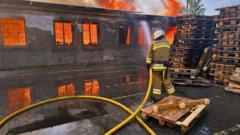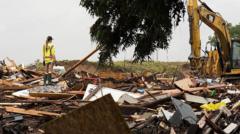An earthquake measuring 7.1 on the Richter scale struck Tibet's Shigatse city, leaving at least 32 dead and over 38 injured. The quake's aftershocks and damaging impact underscore the region's history of seismic activity along a major fault line.
Major Earthquake Strikes Tibet: Casualties and Destruction Reported
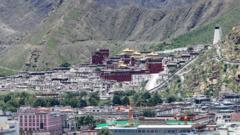
Major Earthquake Strikes Tibet: Casualties and Destruction Reported
A powerful 7.1 magnitude earthquake has devastated Tibet, claiming at least 32 lives and injuring dozens, prompting a significant rescue response.
A significant earthquake measuring 7.1 in magnitude shook Tibet on Tuesday morning, leading to tragic consequences with at least 32 confirmed dead and 38 injuries, as reported by Chinese state media. The tremor hit the holy city of Shigatse at approximately 09:00 local time (01:00 GMT), with a depth of 10 kilometers (six miles). The US Geological Survey noted that there were various aftershocks following the main quake.
Tremors were felt not only across Tibet but also in neighboring Nepal and parts of India. This mountainous region is prone to earthquakes due to its location along a critical geological fault line, making seismic activity a common occurrence. Shigatse is revered as one of the holiest cities in Tibet and serves as the traditional residence of the Panchen Lama, a leading figure in Tibetan Buddhism.
Chinese media reported a slightly lower magnitude of 6.8 for the earthquake, indicating “obvious” tremors that resulted in structural damage to more than 1,000 buildings. Eyewitness accounts and social media footage illustrated the extent of destruction, showing buildings collapsing amidst the chaos.
Researcher Jiang Haikun from the China Earthquake Networks Center stated that after a major quake, there exists a pattern of diminishing tremors, though he cautioned that additional quakes could follow, with a possible magnitude of around 5 being likely. However, he indicated that the chance of a more significant quake is relatively low.
In response to the disaster, the Chinese air force has mobilized rescue efforts, employing drones to assist in reaching affected areas. The region, situated at the base of Mount Everest, is bracing for harsh weather with freezing temperatures, complicating rescue and recovery operations.
Reports indicate that the earthquake has resulted in power and water outages in affected regions. Fortunately, despite tremors being felt in Nepal, local officials have confirmed there are currently no casualties or substantial damage reported. Meanwhile, Tibet’s earthquake bureau stated that they are in the process of verifying casualty numbers and assessing the overall situation.
The frequency of seismic events in this region is a reminder of the structural vulnerabilities that exist where the Indian and Eurasian tectonic plates collide. The last significant earthquake of note was in 2015, near Kathmandu, which resulted in nearly 9,000 fatalities and over 20,000 injuries.






